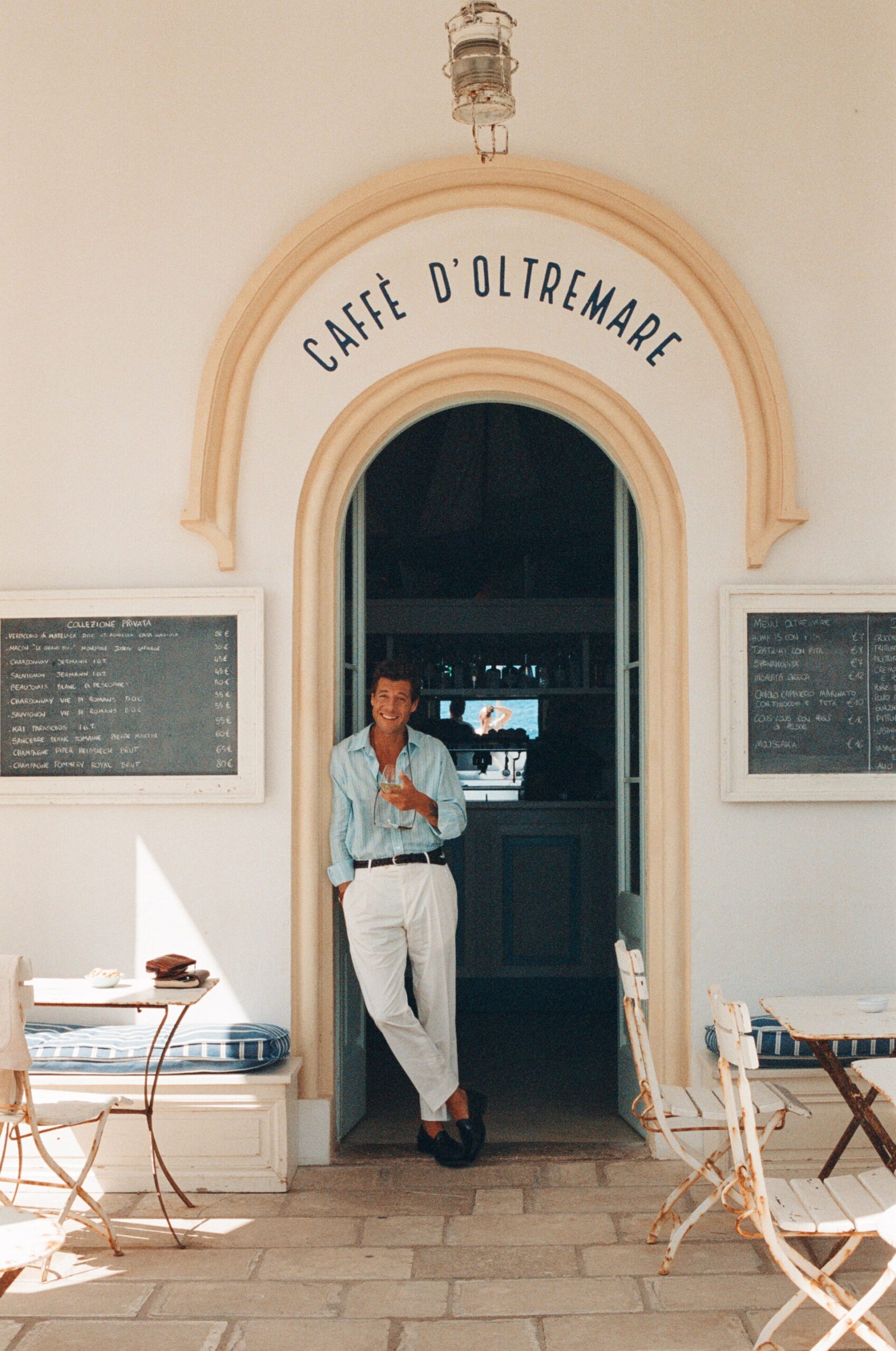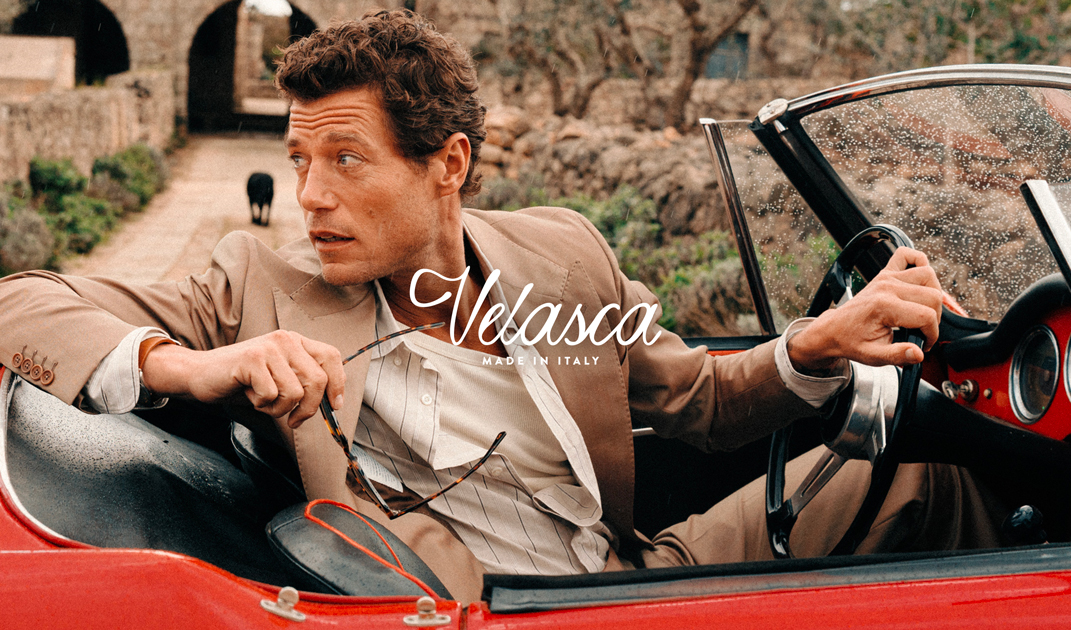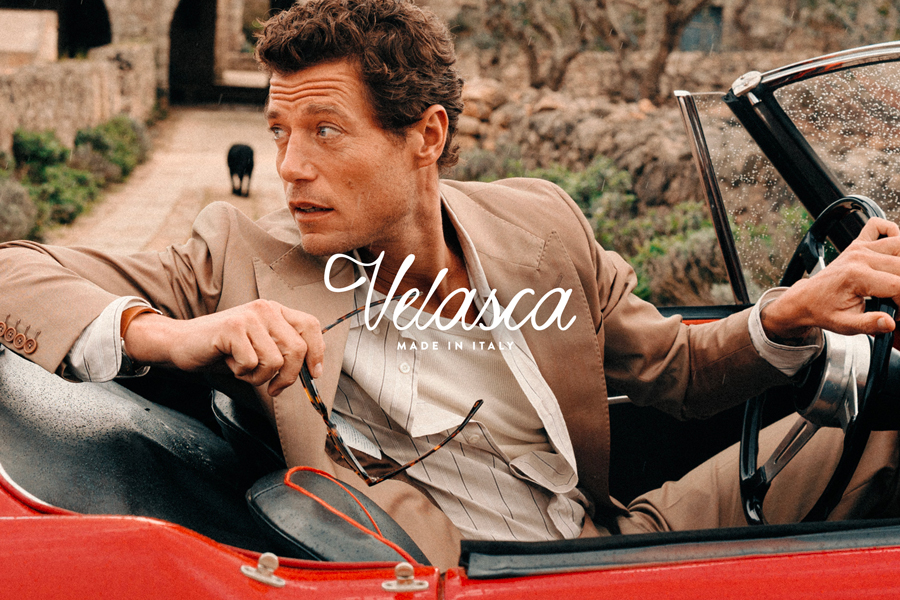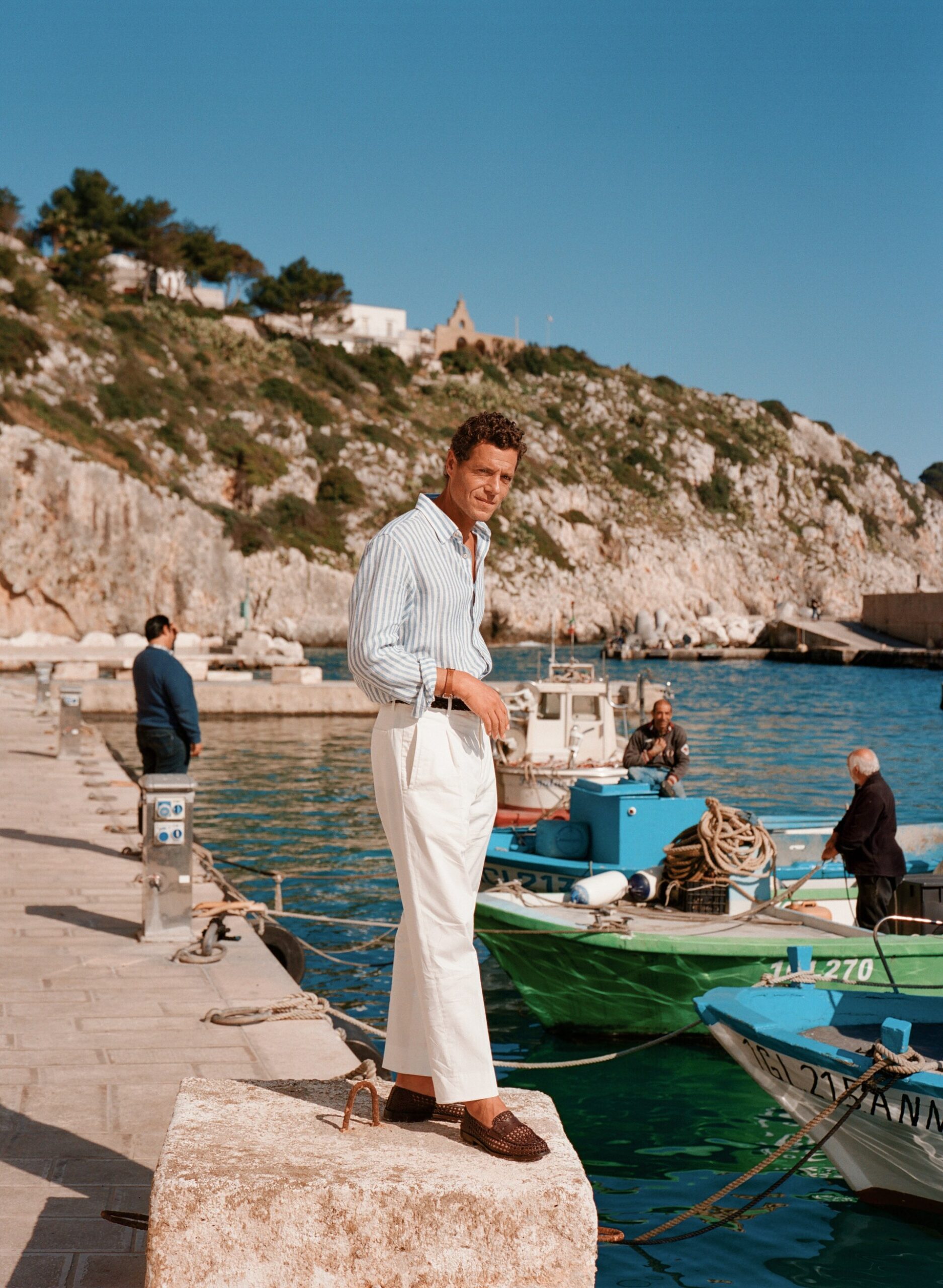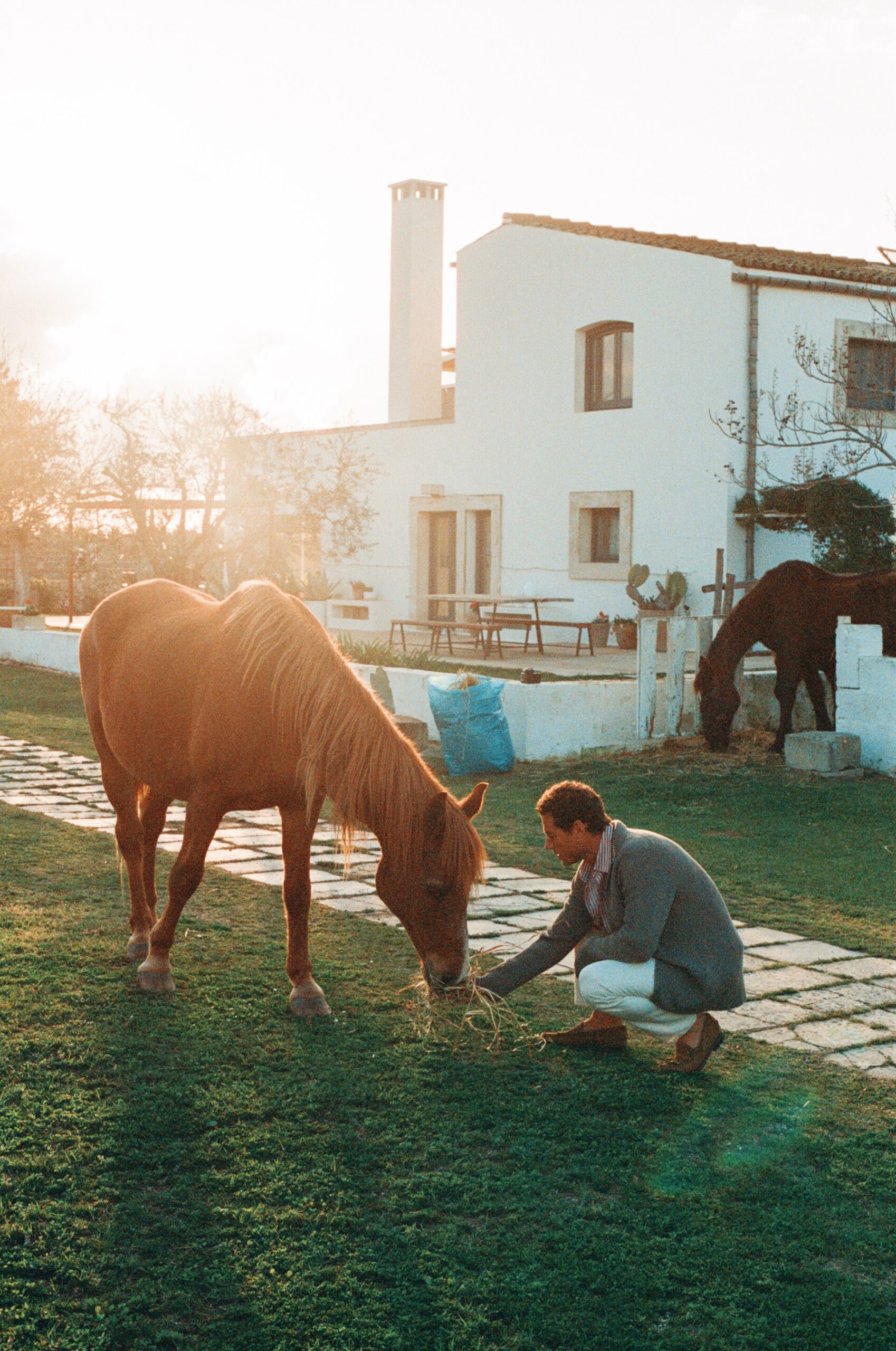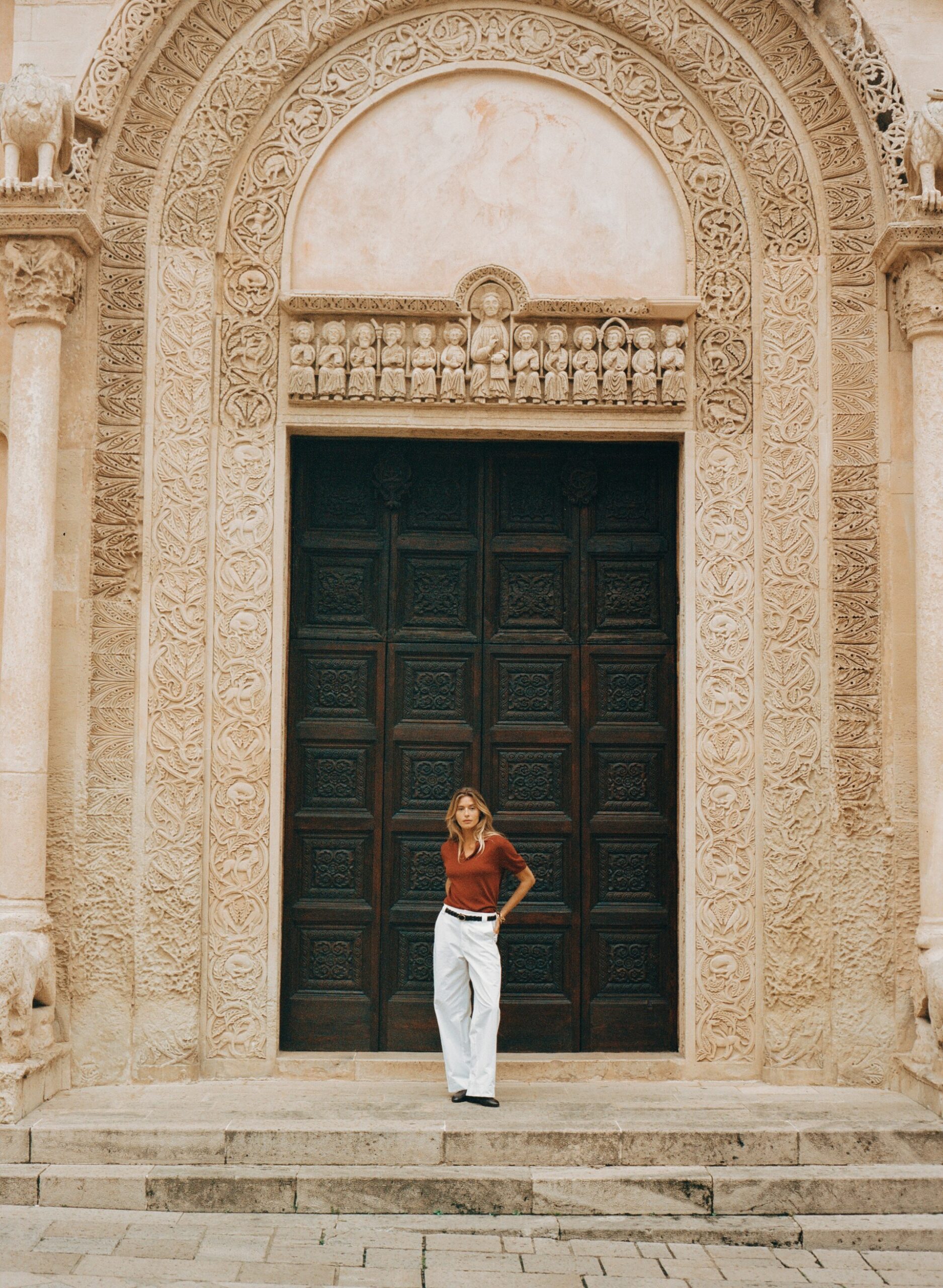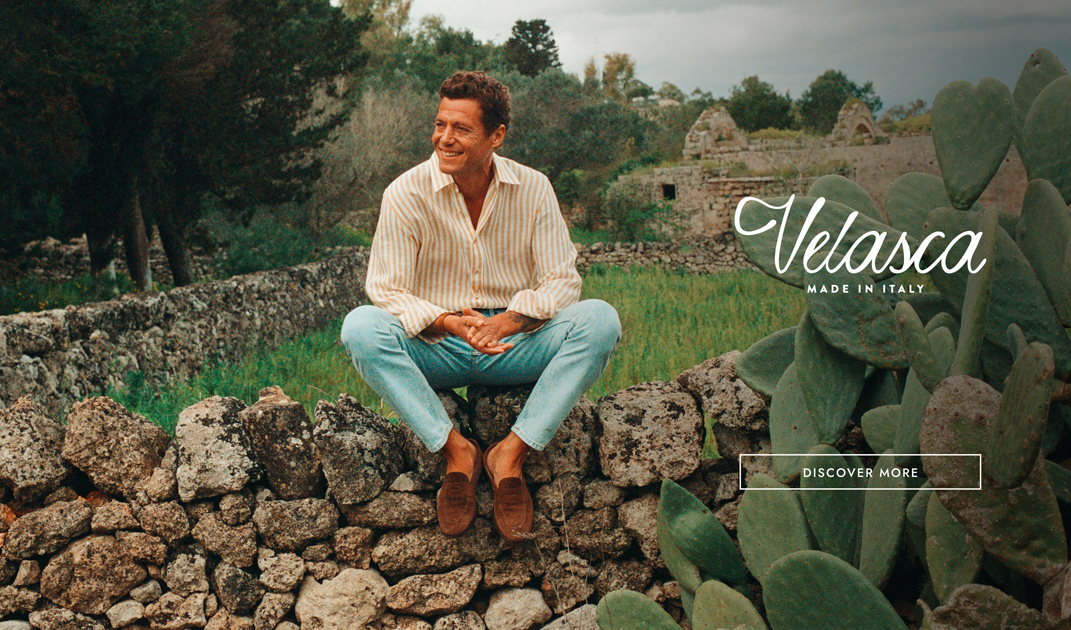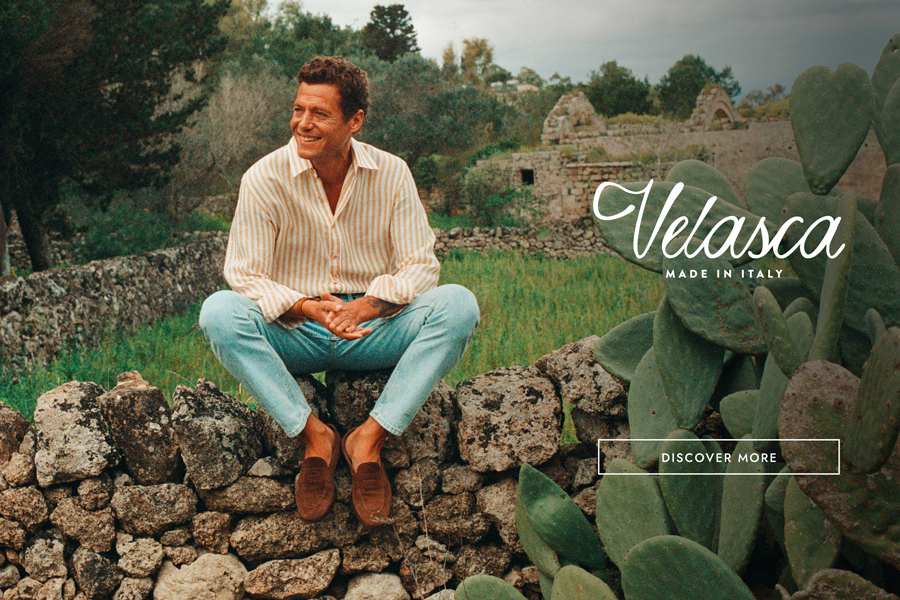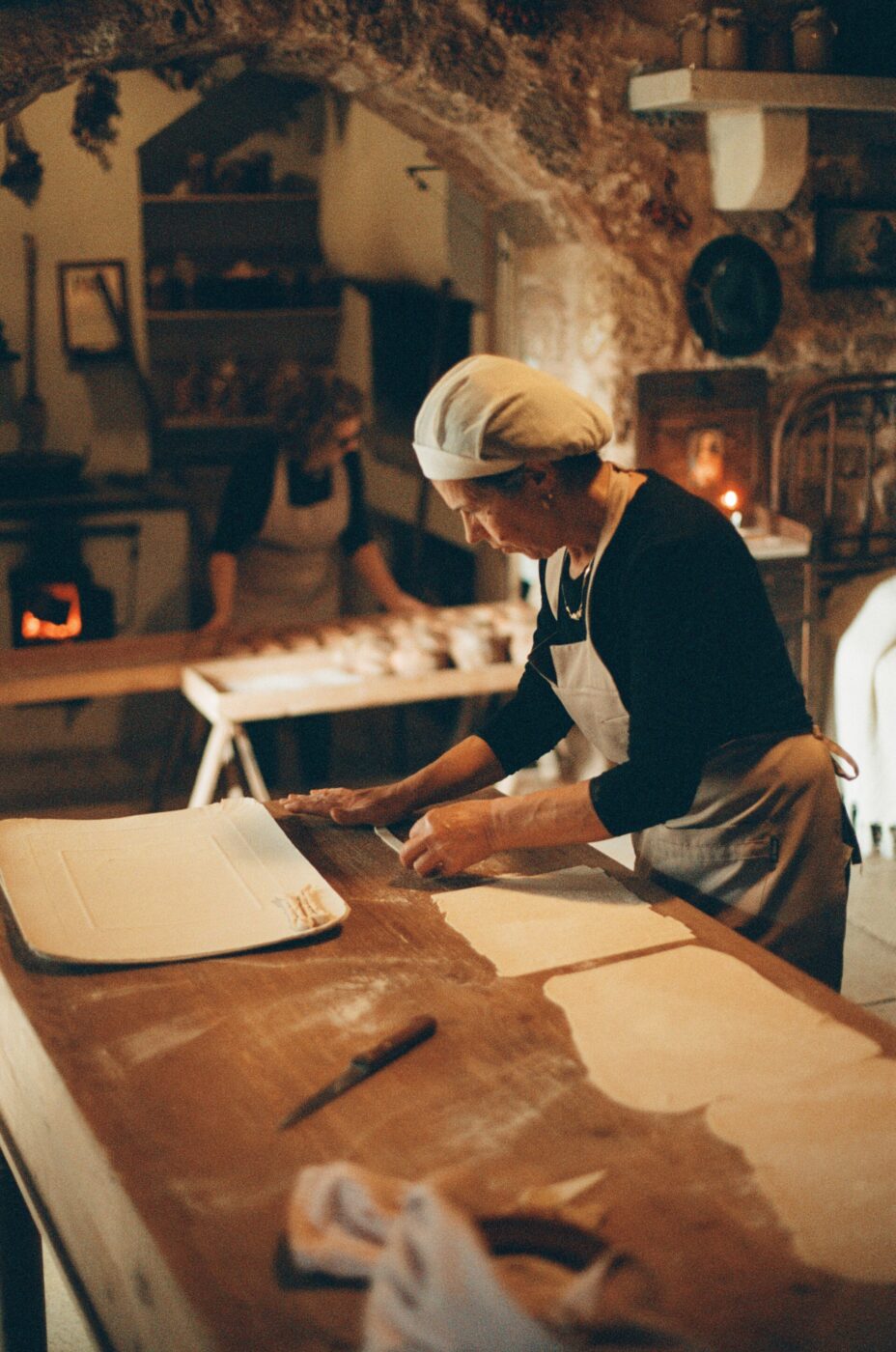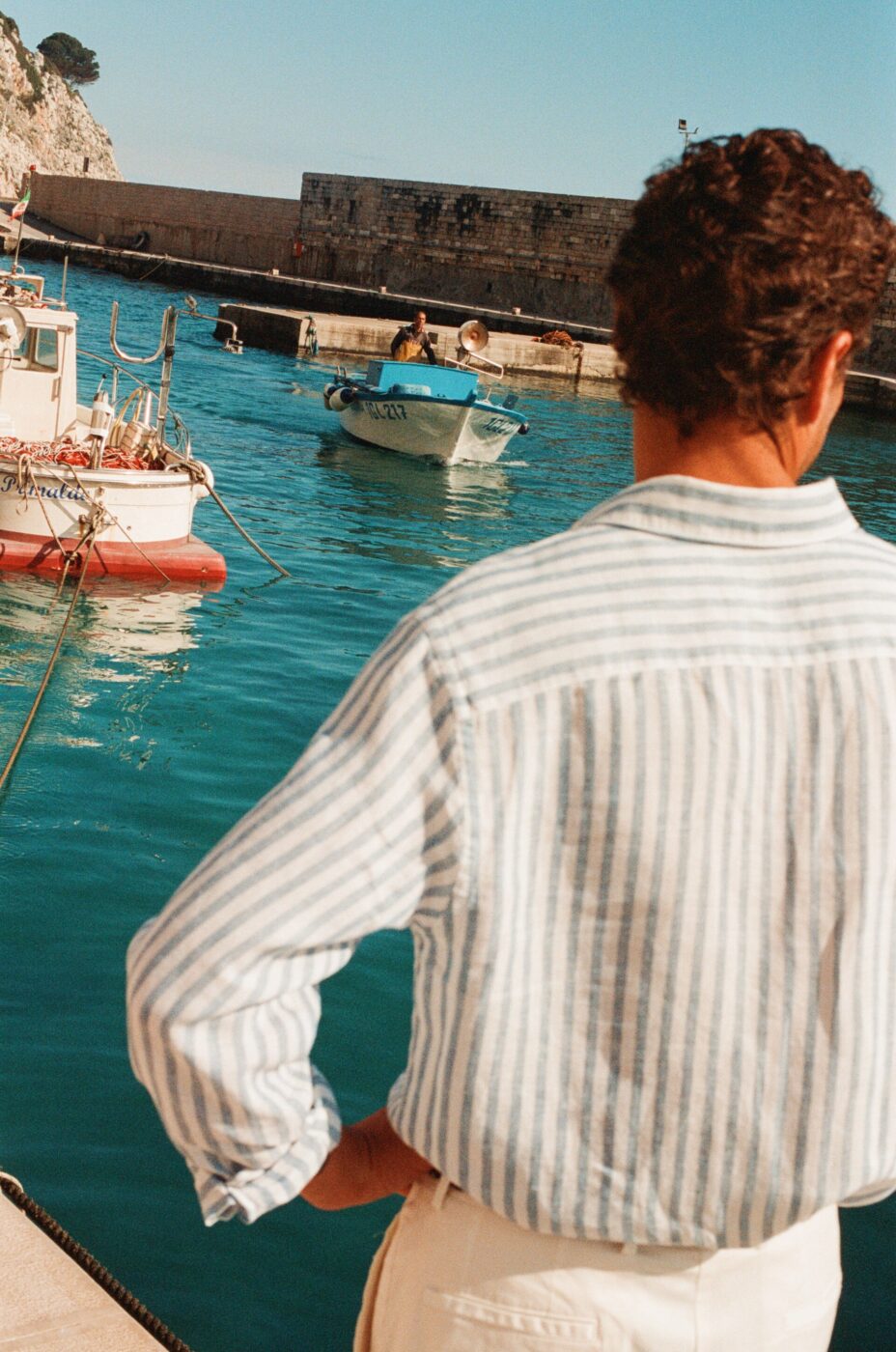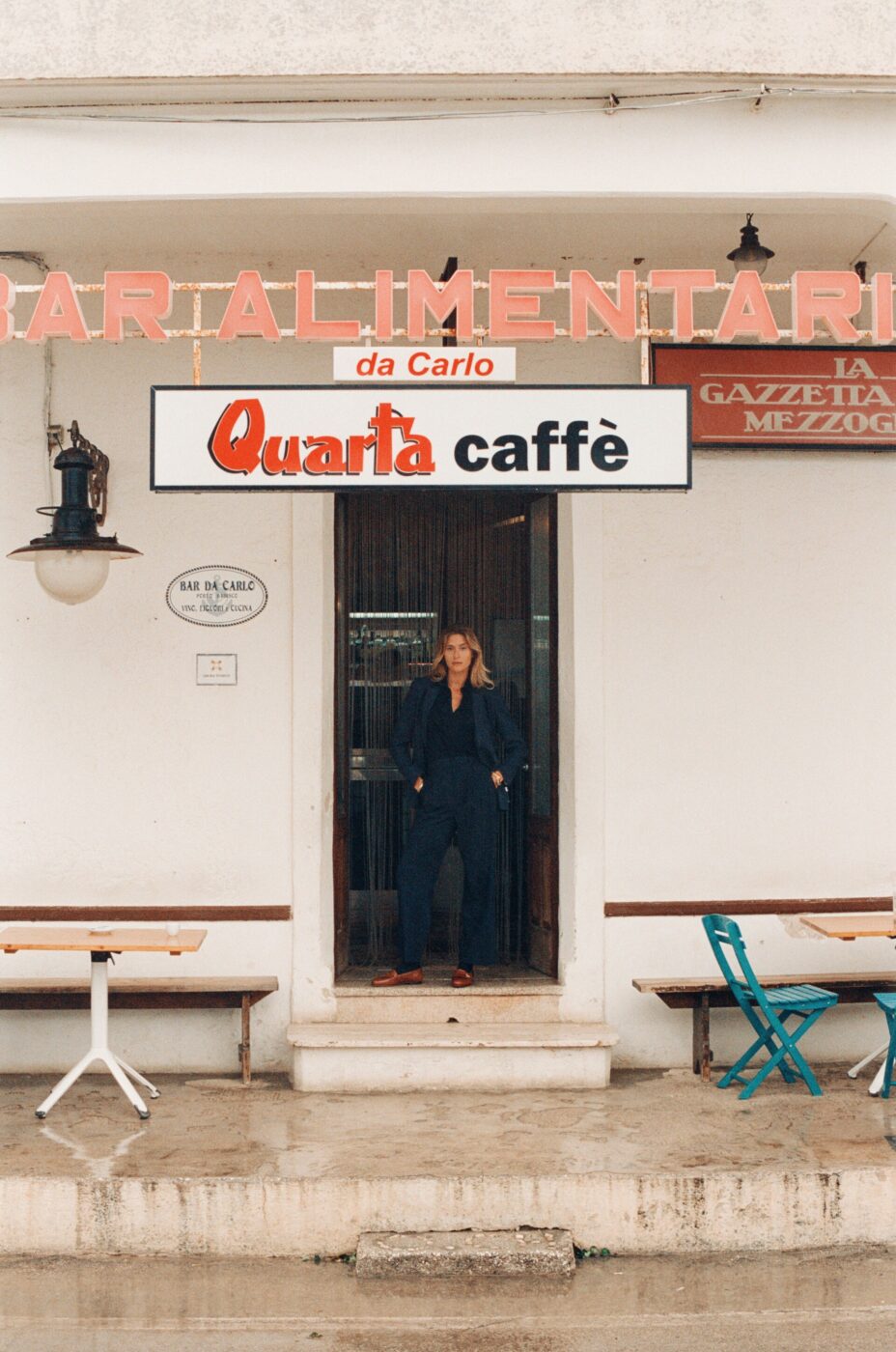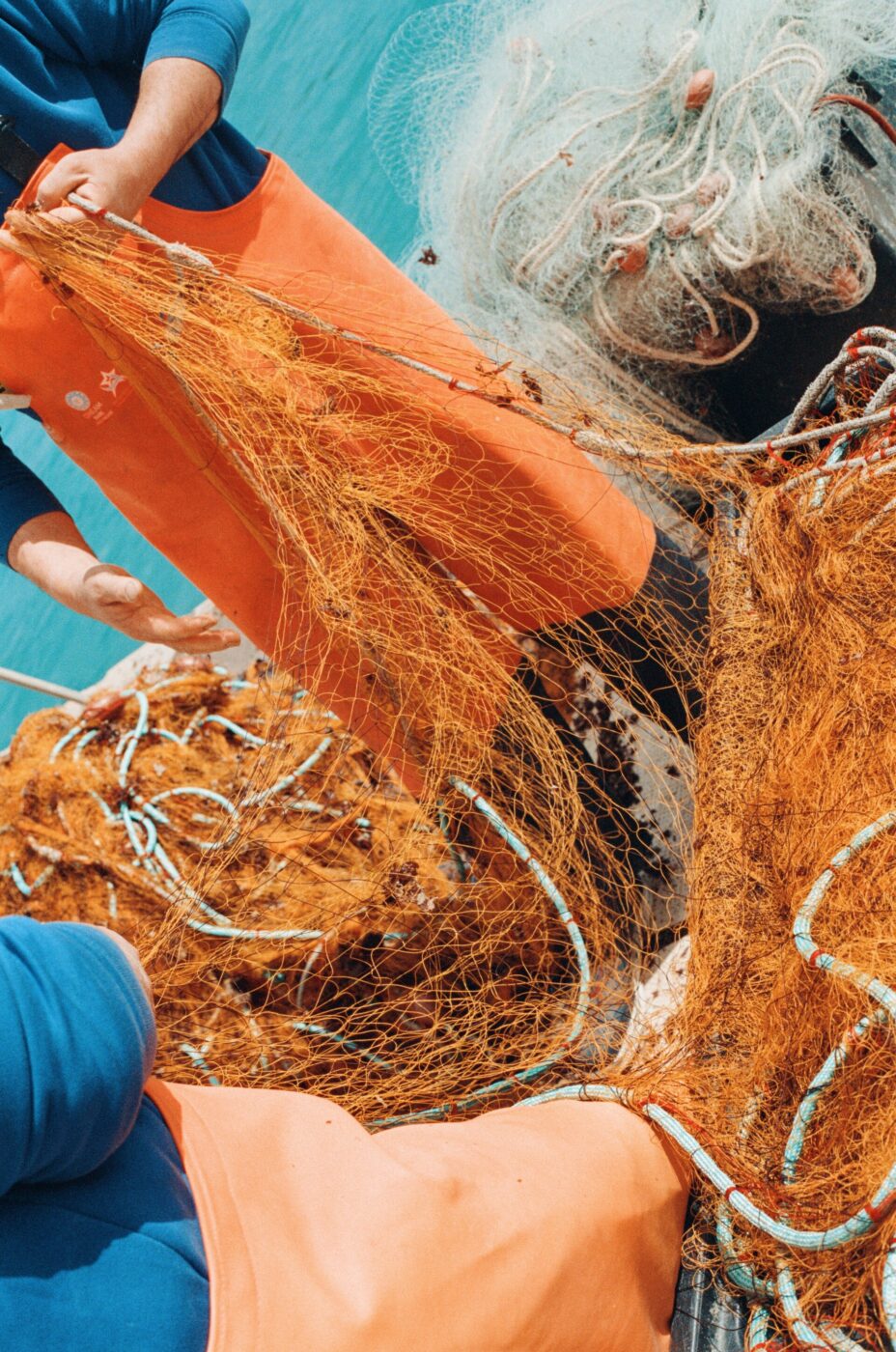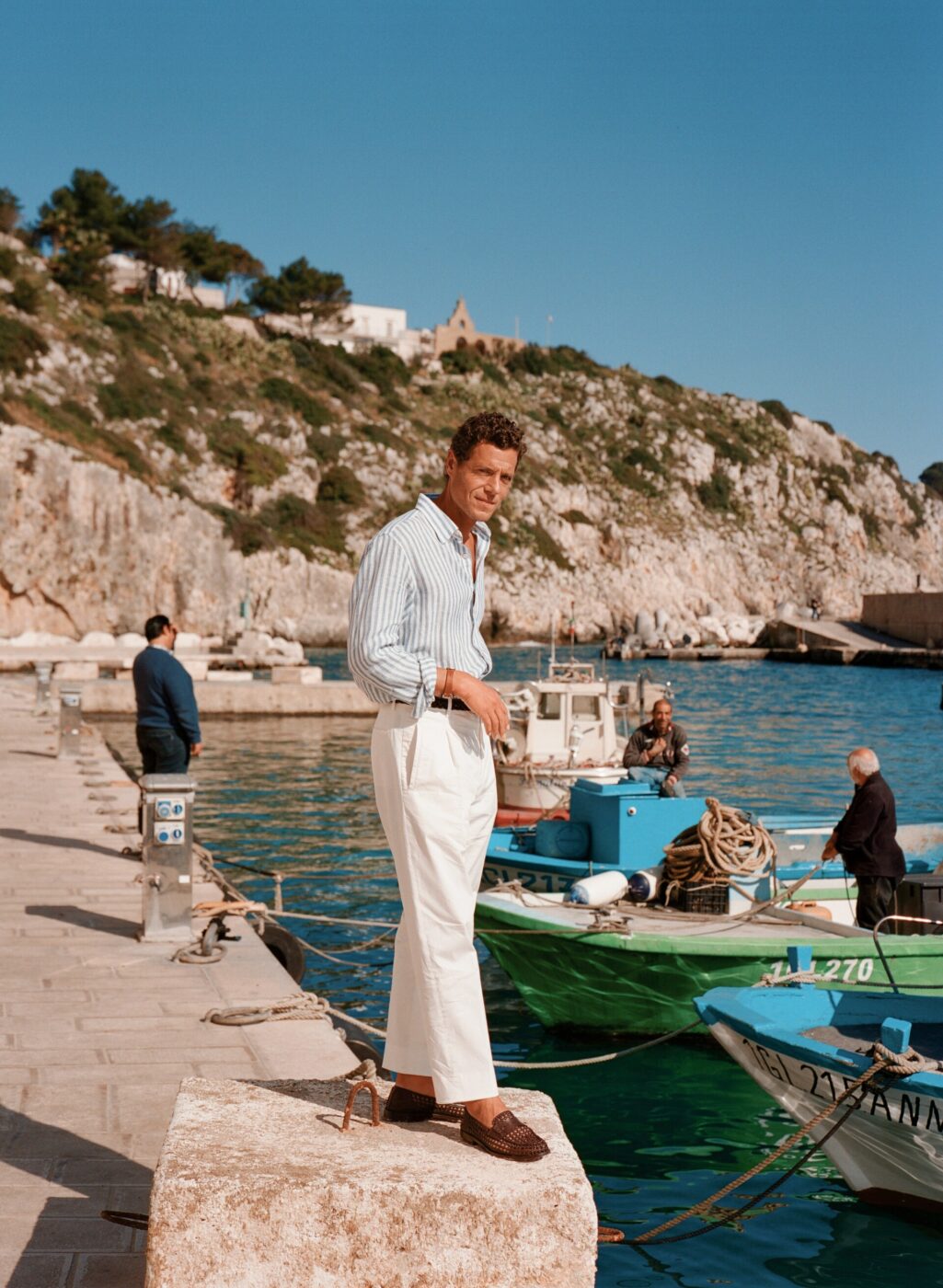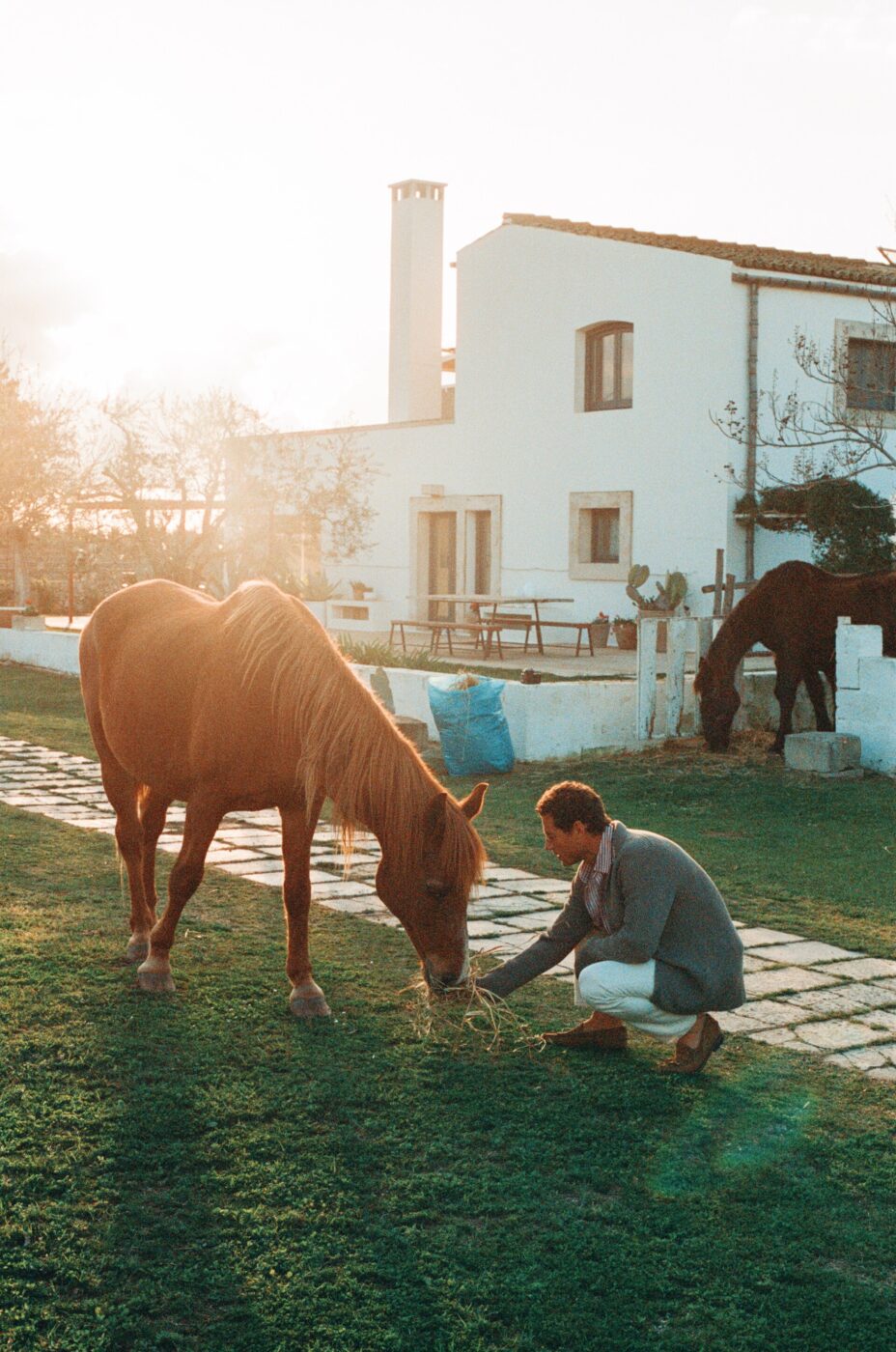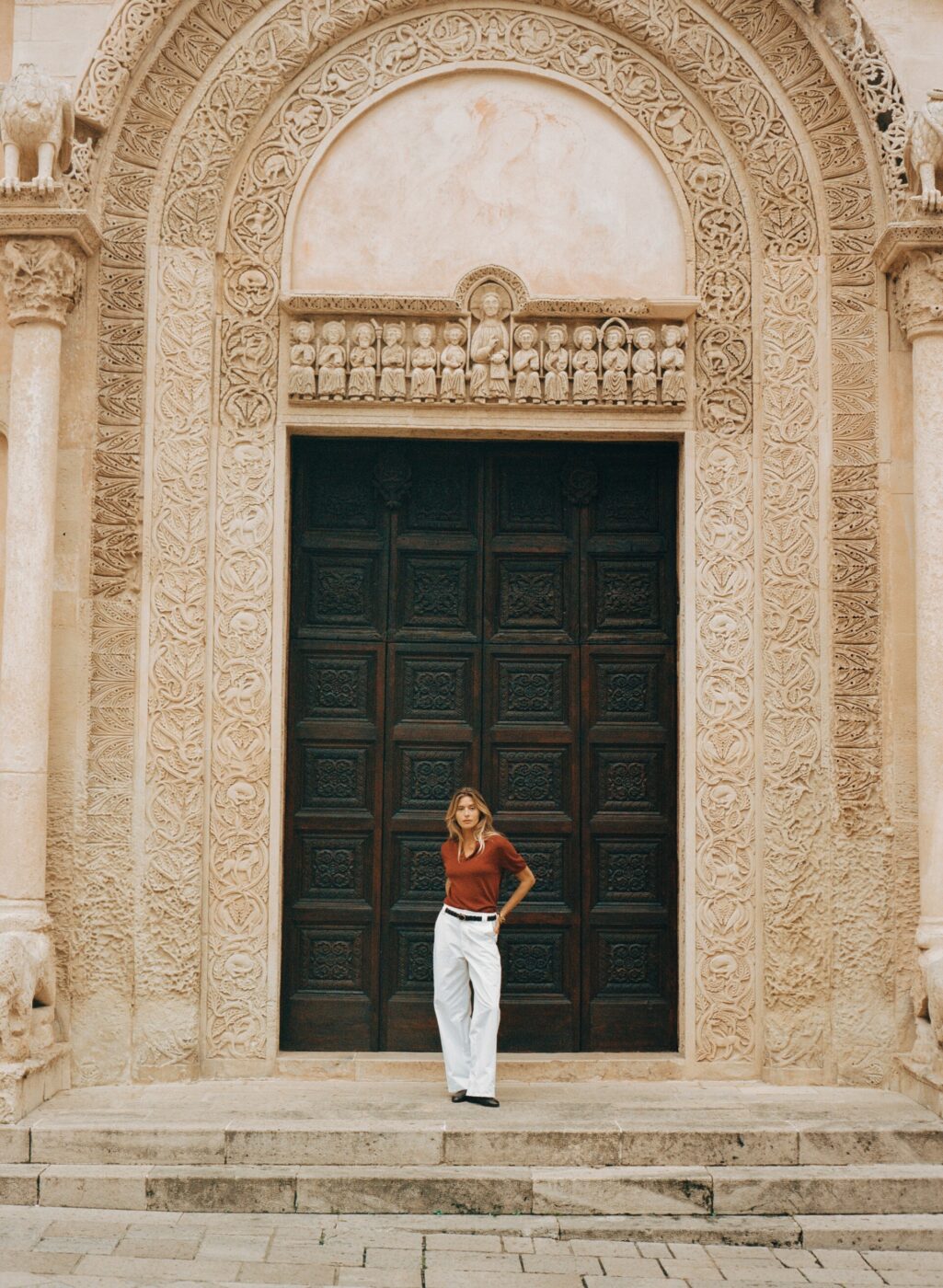The southernmost stretch of Puglia, Salento is where the region thins out into sunburnt fields, limestone cliffs, and two very different coasts. On the Adriatic side, you’ll find deep grottos and wild, rocky coves. On the Ionian, long sandy beaches and calmer water. In between: Lecce’s Baroque historic center, masserias still pressing their own oil, and small towns where creative projects are popping up behind unmarked doors.
Here, our guide to where to eat, drink, and sleep—and what to do—in Salento, curated by our network of on-the-ground locals.
WHERE TO SLEEP IN SALENTO
Masseria Prosperi (north of Otranto) – This whitewashed farmhouse near Otranto, part of the Italy Segreta Selection, balances old-world rhythm with quiet luxury. Owners Mercedes and Antonio have created a place where flea-market finds sit beside indoor and outdoor pools, horses graze outside your window, and communal dinners stretch late into the night. Come for the slow pace, stay for the steam room and the goat named Bella.
Convento di Santa Maria di Costantinopoli (Marittima) – Once a 16th-century Franciscan monastery, now a soulful eight-room guesthouse just outside Marittima, this convent is filled with rare textiles, Ethiopian crosses, and antique maps—British art collector Lord Alistair McAlpine’s lifelong collection layered over original stone floors and vaulted ceilings. With wild gardens and shaded cloisters, the former convent, now run by Alistair’s wife Athena, is the kind of place you come to rest and end up staying put.
Montekore (Cannole, near Otranto) – This villa is removed from it all, set on a 20-acre organic farm near Cannole, just inland from Otranto and the translucent beaches of Baia dei Turchi. With a wide variety of crops, herbs, and aromatic plants, the land feels both untamed and quietly curated. Interiors by Florentine studio Riccardo Barthel strike a perfect balance between refined and relaxed.
Palazzo Luce (Lecce) – An 18th-century palazzo in the heart of Lecce reimagined by collector Anna Maria Enselmi, Palazzo Luce has just nine suites, a private cinema, and a rooftop overlooking the duomo. Each room is a dialogue between eras—Baroque bones, Gio Ponti chairs, Ettore Sottsass ceramics, site-specific installations.
Hotel Piccolo Mondo (Castro Marina) – Built into the cliffs just above Castro Marina, Hotel Piccolo Mondo has been family-run since the 1960s. Rooms are pared-back but airy, many with private terraces and sweeping views of the Adriatic. There’s a saltwater pool carved into the rock, Mediterranean gardens full of citrus and bougainvillea, and a steep private staircase that leads straight to the sea. Between swims, you can have lunch under the pines at the on-site restaurant, where the focus is fresh seafood and Salento classics.
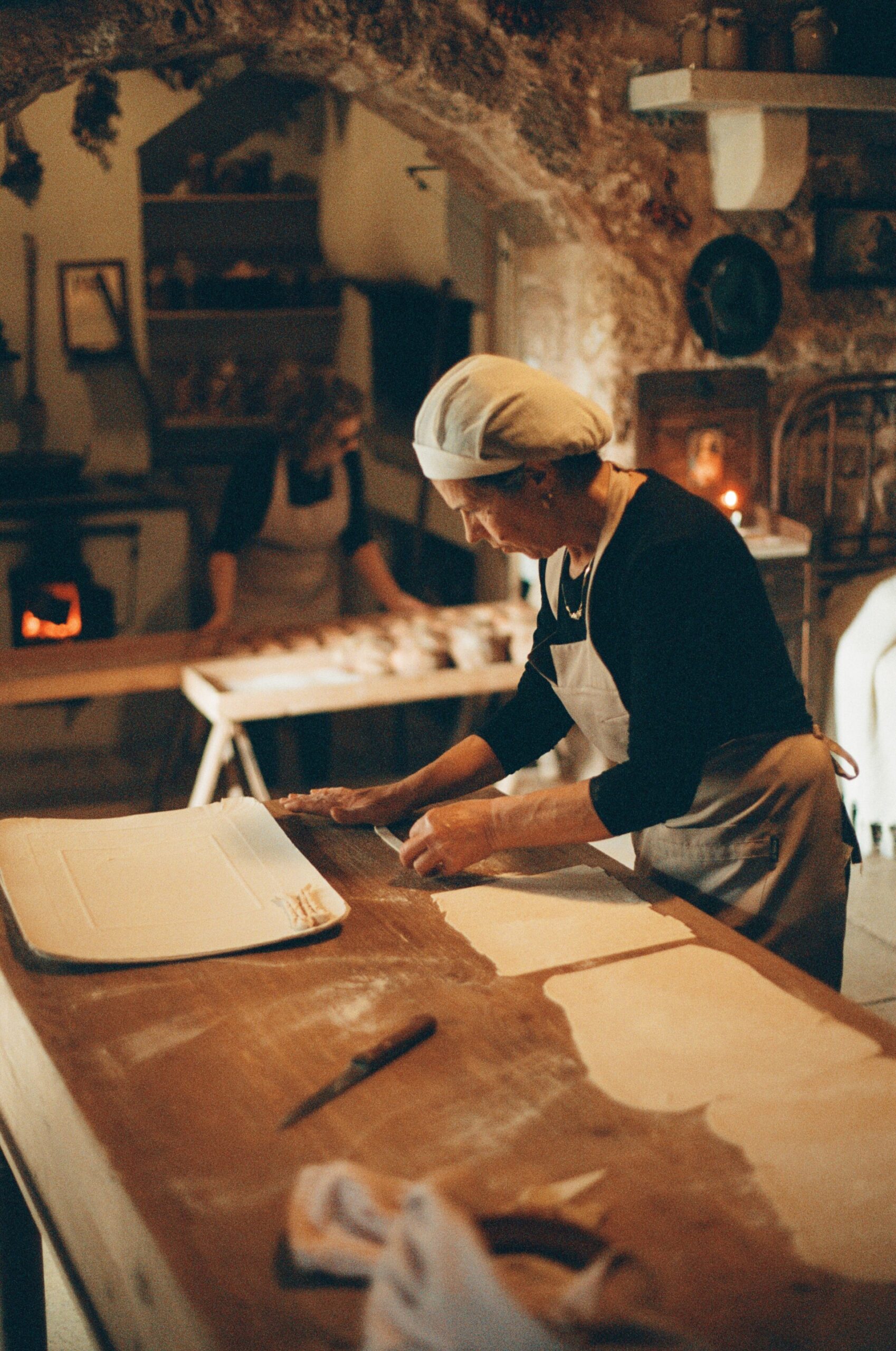
Masseria Le Stanzie
WHAT TO DO IN SALENTO
Faraglioni di Sant’Andrea – These limestone stacks rise dramatically from the Adriatic just north of Otranto. Park in the paid lot, then walk the short path to the edge for a jaw-dropping panorama of arches, caves, and aquamarine water. Jump off the rocks (if you’re brave)—the water’s deep and clear—or bring a picnic and settle in for a wind-swept aperitivo on the rocks.
Centro Storico di Lecce – Built in buttery pietra leccese and draped in Baroque flourishes, Lecce’s historic center is a labyrinth of carved cherubs, curly facades, and ornate balconies. At every turn, you’ll find gorgeous churches (like the over-the-top Basilica di Santa Croce), but head to Piazza Duomo, enclosed on three sides like a theatrical set, for one of the most atmospheric squares in Italy—especially at dusk. Lecce, which is known as the “Florence of the South,” isn’t stuck in the past, however—its historic center is quickly becoming one of the most creative corners of the region, with young artists opening studios, cafés doubling as bookshops, and low-key cocktail bars filling former monasteries.
Vincent City (Guagnano) – In the outskirts of Guagnano, artist Vincent Brunetti has spent over 30 years building his own mosaic-covered world: part home, part museum, part chapel. What started as a tribute to peace and faith is now a labyrinth of towers, columns, domes, and tiled surfaces—some biblical, some surreal, all made by hand. It’s open to visitors, but call ahead—Brunetti still lives and works on-site and will likely be the one to let you in.
Porto di Tricase – One of the most picturesque little harbors in Salento, this is where locals go for a slow stroll alongside fishing boats or a quick dip off the rocks into the shockingly turquoise waters. Come at golden hour for an aperitivo by the water and, if you can, stay for dinner at Taverna del Porto (book ahead—it fills up fast).
Castro Marina – With just over 600 residents, this steep stone town may be small, but its coastline packs a punch. This stretch of Salento is lined with natural sea caves—Zinzulusa, Romanelli, Azzurra, Palombara—and has been shaped by human hands since the Hellenistic era, when the area served as a limestone quarry for the Acropolis above. Near the port, you can still spot the cave warehouses used by fishermen today. There’s also a bagno that sets up umbrellas and loungers right on the rocky outcrop.
Faro di Punta Palascìa – Italy’s most easterly point, the lighthouse at Punta Palascìa stands alone on a rocky promontory, accessible via a winding dirt path (wear proper shoes). Best visited at dawn to watch the sun rise before anyone else in Italy, or at sunset when the sky turns electric and the only sound is the sea.
Roca Vecchia & Grotta della Poesia – Part archaeological site, part natural monument, Grotta della Poesia is a deep sinkhole carved into the limestone cliffs near Roca Vecchia. Once swimmable, the site is now protected—no more cliff jumping or dips—but still well worth a visit for its dramatic form and storied past. Legend says a princess once bathed here, inspiring poets to gather and compose verses on the cave walls—some of which, along with ancient inscriptions, remain etched into the stone. Pair it with a walk through the ruins of the Messapian settlement just steps away, and go early before the tour buses arrive.
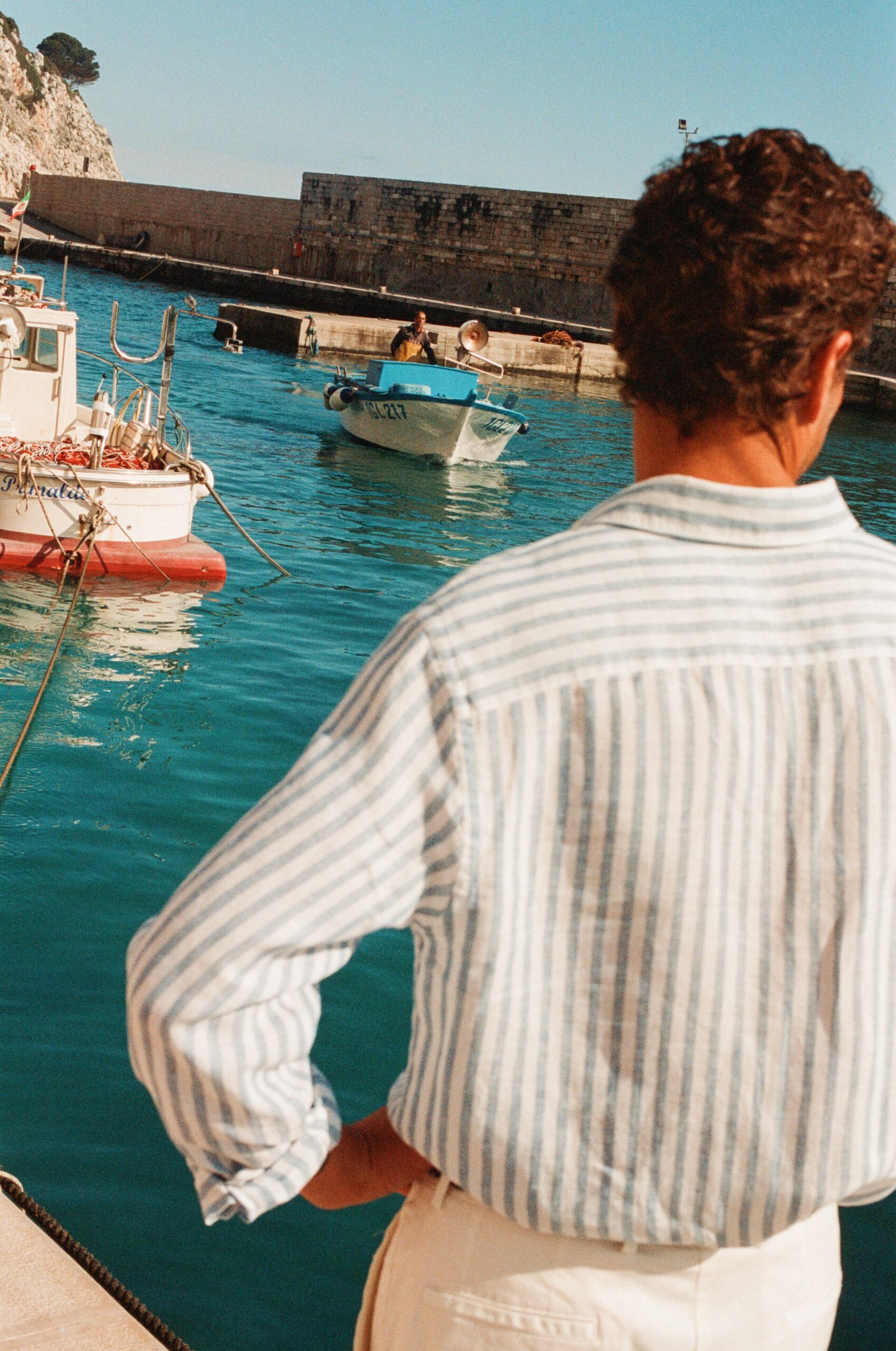
WHERE TO EAT IN SALENTO
Masseria Le Stanzie (Supersano) – This 16th-century masseria still works the land and serves food the old way. Dishes come from Salento’s cucina povera tradition—think rustic breads, local legumes, and vegetables cooked over embers—served in vaulted rooms with thick stone walls and open fireplaces. You can visit the old olive oil press, see where tomatoes are dried in the sun, and get a feel for rural life that hasn’t been overly polished.
Bar Alimentari Tabacchi da Carlo (Porto Badisco) – Set just steps from the sea in tiny Porto Badisco, this alimentari-tabacchi-bar hybrid is as unfussy as they come. Wooden folding chairs and shelves stocked with local goods set the tone—people come for pane e pomodoro, friselle, fresh cheeses, and whatever else is simple and in season from the tight primi and secondi menu. Order at the counter, grab a table outside, and settle in for a long, easy lunch.
Pasticceria Andrea Ascalone (Galatina) – The birthplace of the pasticciotto, invented here in 1745, and still made with a fiercely guarded recipe. The pasticceria is tiny, with antique counters and brass scales, and doesn’t cater to tourists. Ask for your pasticciotto caldo (hot) and eat it standing up, like everyone else.
Le Zie Trattoria Casereccia (Lecce) – Le Zie in Lecce is the kind of old-school osteria where you ring the doorbell and step into a home filled with the scent of slow-cooked goodies and warm, no-frills hospitality. The menu respects the culinary traditions of Salento—seasonal vegetables, stuffed squid, ciceri e tria (chickpeas and pasta, a must order), and sagne ‘ncannulate (a long, twisted pasta) with hearty sauces. They don’t take culinary shortcuts, and there are no creative “interpretations” here.
Taverna del Porto (Tricase) – Opened by former fisherman Mario Coppola, this harborside trattoria is a love letter to the sea and its seasons. The menu changes daily, but expect elegant simplicity—like spaghetti with muddica (toasted breadcrumbs), mackerel, and wild fennel, or raw red shrimp dressed with just salt and citrus. Everything is local, nothing is wasted, and the view—fishing boats bobbing below candlelit tables—is pure Salento.
Capitan Morgan (San Foca) – For those who care more about the food than the service or ambience (though it still has that casual, local, down-to-earth feel we love), there’s a seafood shack in San Foca—just outside Lecce—that you’d never give a second glance to, but it’ll surprise you with some of the freshest seafood around.
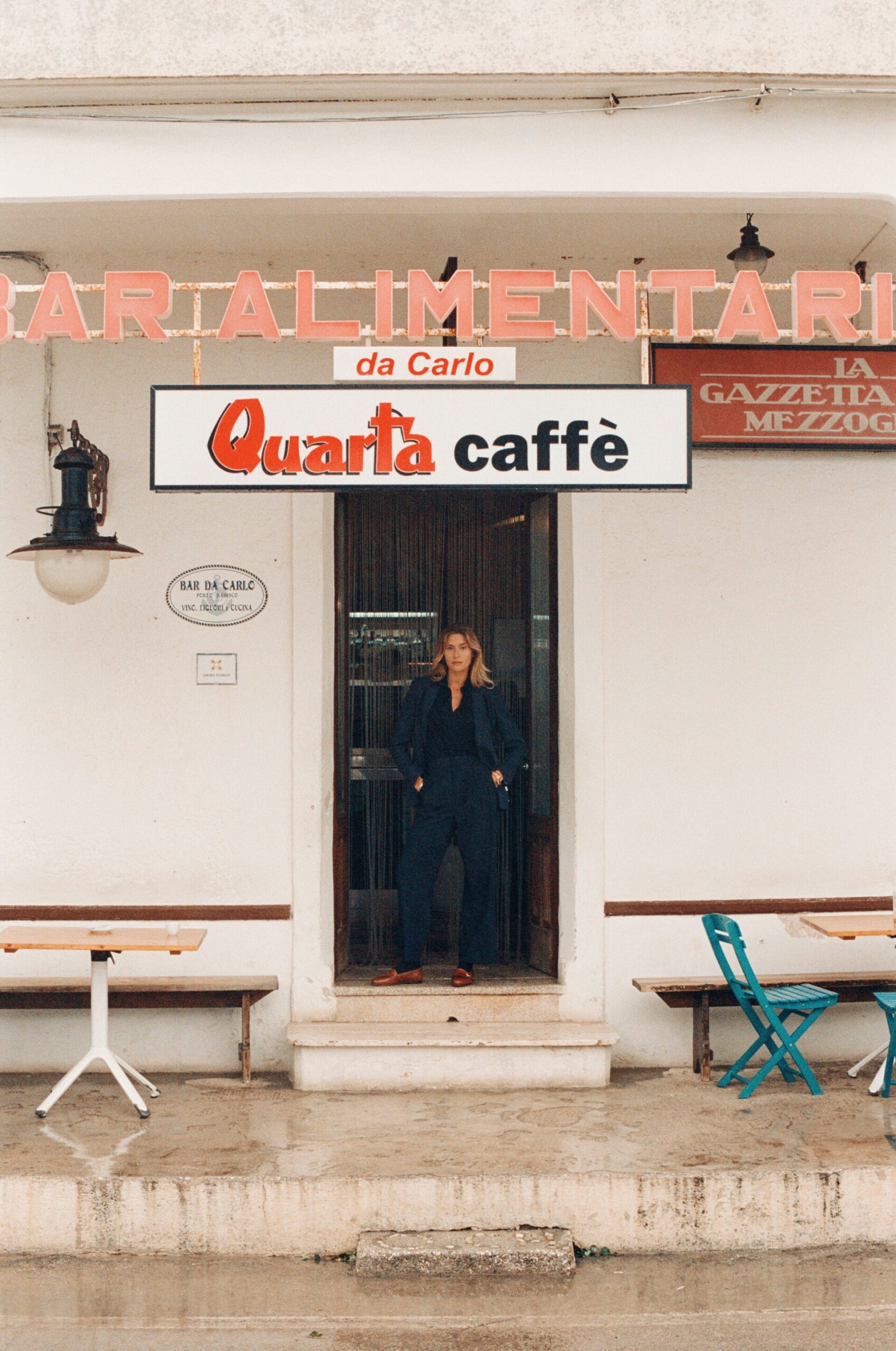
WHERE TO DRINK IN SALENTO
Picci Bar (Carovigno) – A time capsule of 1960s Italy, Picci is filled with original wall-mounted telephones, jukeboxes, pinball machines, and retro signage—all curated by founder Pierangelo Oliva. Out front, multicolored chairs and tables spill into the pedestrian-only street, making it the perfect perch for people-watching. Beyond the vintage charm, it’s a true community hub, hosting everything from live jazz to art exhibitions.
AlVentuno (Lecce) – An all-day café and cocktail bar with serious range: morning cornetti and espresso give way to evening aperitivi and cobbled-street cocktails. The energy shifts with the sun, but it’s always vibrant, especially during golden hour (read: aperitivo hour) in Lecce’s centro storico.
Caffè d’Oltremare (Tricase) – With a terrace perched right above the sea and blue-and-white details that nod to nearby Greece, this spot feels more island taverna than southern café. The menu leans Greek too—think spanakopita, moussaka, tzatziki, and greek salad—and is just as good as the cocktails. Wear your swimsuit, order a drink, and hop straight into the water between bites.
